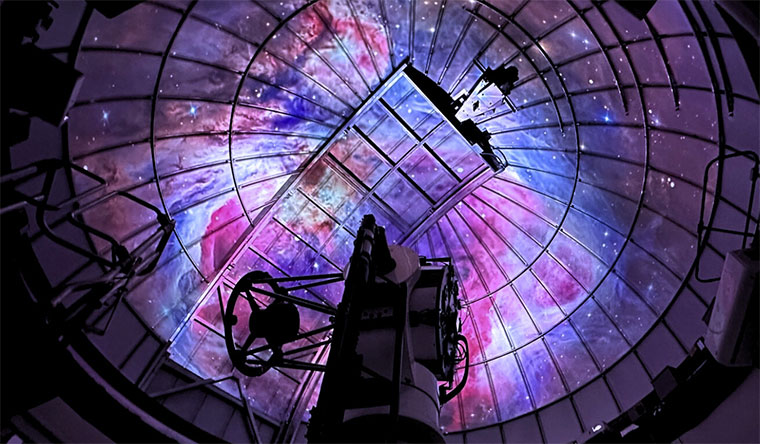BRUNEAU DUNES STATE PARK, Idaho — Bruneau Dunes State Park has been certified as an International Dark Sky Park by DarkSky International. This certification is important as Bruneau Dunes possesses almost pristine natural nighttime skies, an increasingly rare phenomenon in a world of growing light pollution. Due to the incredible stargazing opportunities at the Park, it is home to two of the most powerful public telescopes in the state. By gaining this certification, the Park will enhance its ability to promote education and outreach about preserving night sky conditions.
“For over 25 years, the Park has demonstrated a commitment to preserving natural dark skies. Bruneau Dunes State Park’s astronomy programs are vital for raising awareness about protecting natural darkness from artificial light at night. Programs are offered to the public each weekend, attracting visitors with stunning celestial views and educational content, emphasizing dark sky conservation. This initiative benefits the local community and draws photographers and amateur astronomers from nearby Boise, solidifying Bruneau Dunes as a supreme destination for a quality celestial experience and education. We are excited to see another International Dark Sky Park in Idaho,” remarked Amber Harrison, Dark Sky Places Program Manager.
The Bruneau Dunes State Park lies on the southern margin of the Snake River Plain. The main part of the Park is within Eagle Cove, a horseshoe-shaped basin about 3.5 miles across, formed by an ancient meander channel of the Snake River.
The dunes are a product of the Bonneville Floods, one of the most significant floods in the world that occurred about 14,500 years ago near the end of the last Ice Age. As warming weather melted massive glaciers that had formed throughout the intermountain west during the Ice Age, ancient Lake Bonneville in northern Utah spilled over, resulting in a flood that followed the approximate path of the Snake River canyon. The flow was 200 times the discharge of the modern Snake River and produced a 400-foot high wall of water, which scoured canyon walls and dropped large rounded boulders in the river canyon. Eagle Cove received the slower-moving backwaters of the Bonneville flood, depositing large amounts of clay, silt, and sand in layered beds that can be seen about 2.5 miles south of the Visitor’s Center. Today, Bruneau Dunes includes a 470′ dune towers above the desert floor.
The Idaho Department of Parks and Recreation created Bruneau Dunes State Park in 1967. It encompasses 4800 acres and hosts three campgrounds, two Observatories, two lakes, miles of hiking trails, and breathtaking views of the Owyhee Desert, including the dunes, which, at 470′, hold the title of the “tallest single structured dune in North America.”
Due to its location away from city lighting and ease of public access, the Boise Astronomical Society promoted the construction of an astronomical observatory in the Park. This facility, which provides weekend interpretive programs, was funded by private donations and completed in 1998. The rotating building allows guests to view the wonders of deep space through a twenty-five-inch telescope–one of the largest publicly accessible telescopes in the Northwestern U.S. In 2023, the Park opened an additional observatory housing an even more powerful CDK 700 telescope. The facility also features a built-in planetarium.
Tagged with Dark Skies, DarkSky International